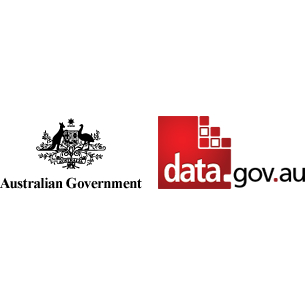Brief description
Tourism is a major export earner for Australia, a source of employment for hundreds of thousands of workers and a key driver of growth in the economy. Unlike many other industries which are concentrated in geographic pockets, the benefits of tourism are widespread, with almost half of all expenditure going into regional Australia.Tourism is also an industry that cuts across many sectors of the Australian economy — retail trade, accommodation, transport and food services being the most obvious examples. As a result, tourism does not fit within conventional frameworks used to measure economic activity. For this reason, tourism satellite accounts have been created to quantify the differing contributions from other industries, and to estimate the value of the visitor economy.
Full description
State Tourism Satellite Accounts, 2015-16 - These spreadsheets use this approach to provide detailed time series information on the economic and labour market impacts of tourism for each state and territory in Australia. Economic data contained in these tables includes tourism consumption, Gross Domestic Product and Gross Value Added attributable to tourism, as well as tourism employment. For the purposes of comparison these measures are also reported for the Australian economy as a whole. The spreadsheets also quantify the value of contributing industries, and measure both the direct and indirect impacts of tourism. For example, while purchasing a meal at a hotel will have a direct impact of Australia’s accommodation and food services sector, there are also indirect effects on the agricultural sector from growing the produce, the transport sector from delivering the produce and the wholesale sector from selling the produce on to the hotel.\r\n\r\n* Table 1: Key direct tourism aggregate results, 2006–07 to 2015–16\r\n* Table 2: Direct tourism output by tourism category, 2006–07 to 2015–16\r\n* Table 3: Direct tourism GVA by tourism category, 2006–07 to 2015–16\r\n* Table 4: Tourism consumption by tourism category, 2006–07 to 2015–16\r\n* Table 5: Direct tourism output by industry – basic prices and state and territory share of total, 2015–16\r\n* Table 6: Direct tourism gross value added by industry – basic prices and state and territory share of total, 2015–16\r\n* Table 7: Direct tourism employment by industry and state and territory share, 2015–16\r\n* Table 8: Tourism consumption by product – purchaser's prices and state and territory share of total, 2015–16\r\n* Table 9: Indirect contribution of tourism, 2006–07 to 2015–16\r\n* Table 10: Total effects of tourism consumption, 2006-07 to 2015–16\r\n* Table 11: State and territory totals of key economic aggregates, 2006–07 to 2015–16\r\n* Table 12: Key direct tourism aggregate results, domestic, 2006–07 to 2015–16\r\n* Table 13: Key direct tourism aggregate results, international, 2006–07 to 2015–16\r\n* Table 14: Tourism shares in state and territory economy, 2006–07 to 2015–16\r\n* Table 15: Industry shares of key economic aggregates by state, 2015–16Tourism's value to states and territories - Tourism GSP, GVA, and employment of New South Wales, Victoria, Queensland, South Australia, Western Australia, Tasmania, Northern Territory, and Australian Capital Territory
State Tourism Satellite Accounts, 2015-16 report - The State Tourism Satellite Accounts (State TSA) report\r\nhighlights the importance of tourism to each state and territory’s\r\neconomy by presenting a comprehensive set of tourism data\r\nfor all states and territories in Australia. The report examines\r\nthe changing pattern of tourism over the period 2006–07 to\r\n2015–16, and the key changes that occurred in 2015–16. At\r\nan Australia-wide level, estimates from this report are consistent\r\nwith the nationally-based Tourism Satellite Accounts produced\r\nby the Australian Bureau of Statistics (ABS) each year.\r\n\r\nData in the State TSA are reliant on a range of other statistics,\r\nwhich are subject to revision from time to time. In particular,\r\nthis year’s report reflects the backcasting of the National Visitor\r\nSurvey (NVS), brought about by improvements in sampling\r\nmethodology, and which led to substantial revisions in 2014–15\r\nState TSA data. As a consequence of this and other revisions,\r\nhistorical data from this report will differ from previous editions.\r\nMore information on these issues can be found in this report’s\r\nExplanatory Notes.
State Tourism Satellite Accounts, 2015-16 interactive charts -
Spatial Coverage And Location
text: australia
Subjects
Economy |
Tourism Economics |
act tourism |
australia tourism |
australian capital territory |
new south wales |
northern territory |
nsw tourism |
nt tourism |
qld tourism |
queensland |
sa tourism |
south australia |
state tourism |
tas tourism |
tasmania |
tourism |
tourism data |
tourism research |
vic tourism |
victoria |
wa tourism |
western australia |
User Contributed Tags
Login to tag this record with meaningful keywords to make it easier to discover
Identifiers
- Local : state-tourism-satellite-accounts-2015-16
- URI : data.gov.au/data/dataset/b91a4b4d-478d-4387-ade3-47b54cfd5710



